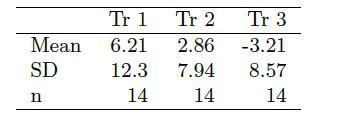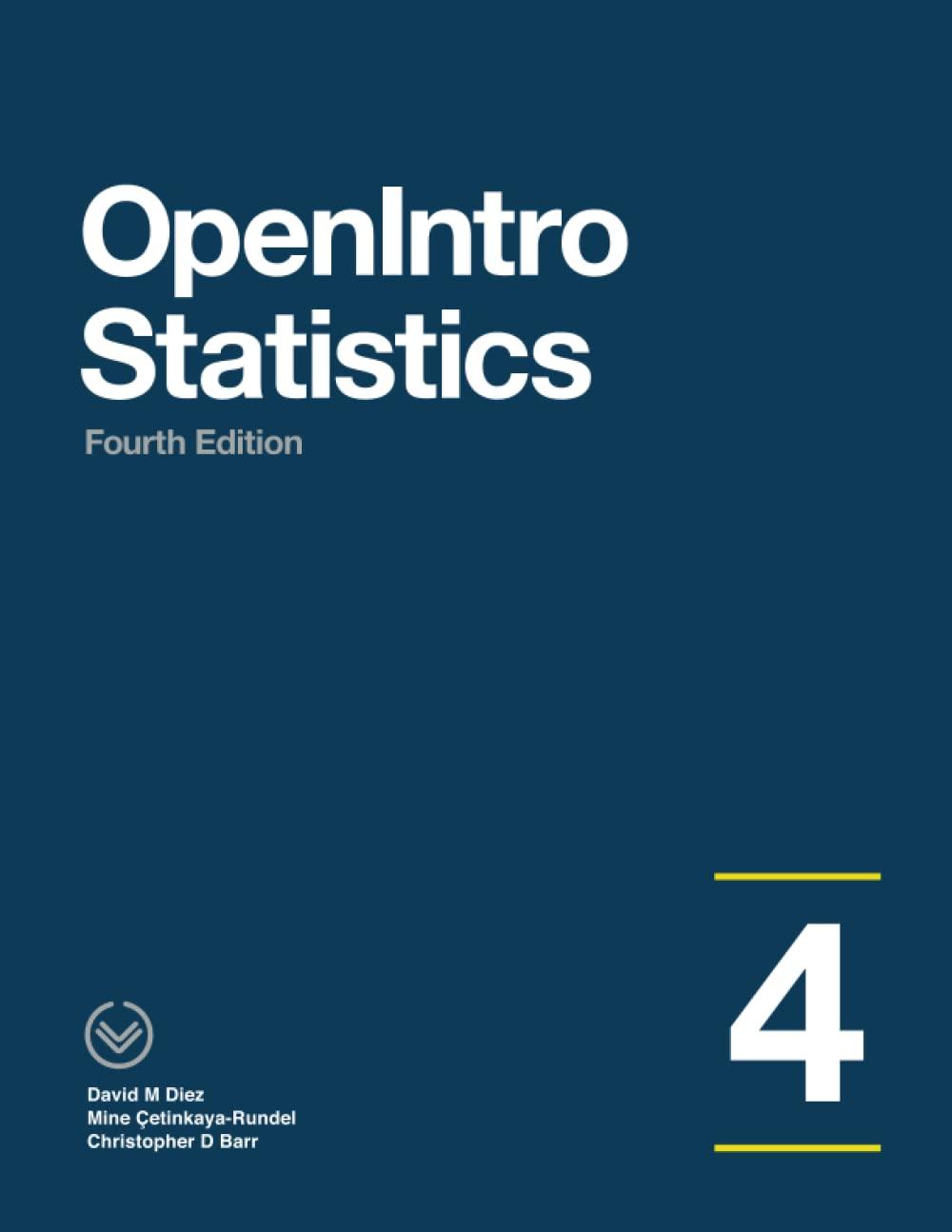Exercise 7.31 introduced an experiment that was conducted with the goal of identifying a treatment that reduces
Question:
Exercise 7.31 introduced an experiment that was conducted with the goal of identifying a treatment that reduces subjects' psychopathic deviant T scores, where this score measures a person's need for control or his rebellion against control. In Exercise 7.31 you evaluated the success of each treatment individually. An alternative analysis involves comparing the success of treatments. The relevant ANOVA output is given below.
(a) What are the hypotheses?
(b) What is the conclusion of the test? Use a 5% significance level.
(c) If in part (b) you determined that the test is significant, conduct pairwise tests to determine which groups are different from each other. If you did not reject the null hypothesis in part (b), recheck your answer. Summary statistics for each group are provided below.
Data from Exercise 7.31
Subjects from Central Prison in Raleigh, NC, volunteered for an experiment involving an "isolation" experience. The goal of the experiment was to find a treatment that reduces subjects' psychopathic deviant T scores. This score measures a person's need for control or their rebellion against control, and it is part of a commonly used mental health test called the Minnesota Multiphasic Personality Inventory (MMPI) test. The experiment had three treatment groups:
(1) Four hours of sensory restriction plus a 15 minute "therapeutic" tape advising that professional help is available.
(2) Four hours of sensory restriction plus a 15 minute "emotionally neutral" tape on training hunting dogs.
(3) Four hours of sensory restriction but no taped message.
Forty-two subjects were randomly assigned to these treatment groups, and an MMPI test was administered before and after the treatment. Distributions of the differences between pre and post treatment scores (pre post) are shown below, along with some sample statistics. Use this information to independently test the effectiveness of each treatment. Make sure to clearly state your hypotheses, check conditions, and interpret results in the context of the data.
Step by Step Answer:

OpenIntro Statistics
ISBN: 9781943450077
4th Edition
Authors: David Diez, Mine Çetinkaya-Rundel, Christopher Barr





